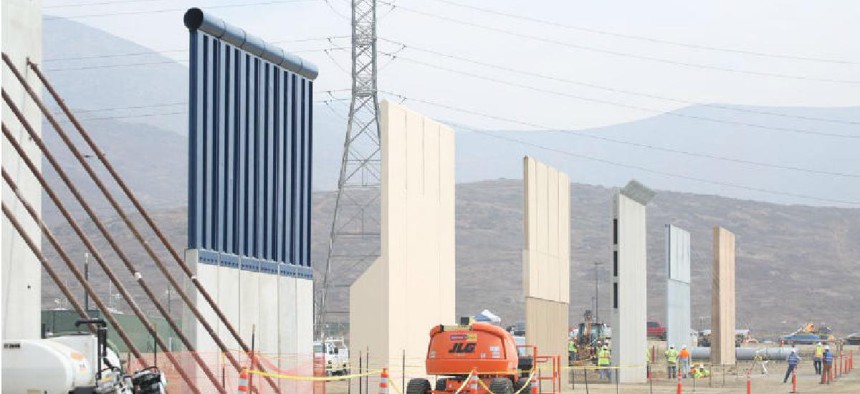How tech supports CBP priorities

Customs and Border Protection is working on many fronts to field new technology, the agency head tells Congress.

Prototypes for a proposed wall along the U.S.-Mexico border.
Border wall construction, more sensor technology and closing loopholes in immigration policy are all keys to a secure border, the leader of Customs and Border Protection told a House Homeland Security Subcommittee hearing.
One of CBP's top priorities, Commissioner Kevin McAleenan said, is staying on the "cutting edge" of technology to secure the border.
That technology makes up a complex portfolio, from fiber-optic cables along border barriers to detect intrusions, ground sensors, integrated fixed towers, non-intrusive drug detection sensors at ports of entry and even extending to wearable technology to monitor the health of CBP's canine officers.
Technological development and deployment, McAleenan told the House Homeland Border and Maritime Security Subcommittee on April 25, is among his five overarching priorities for the agency.
The subcommittee hearing focused on McAleenan's vision for CBP moving forward. Although he has been at the agency for a decade in various positions, including his stint as acting commissioner since the Trump administration took office, McAleenan was just confirmed as commissioner in March.
McAleenan and committee Republicans said closing immigration policy loopholes that allow border crossers to claim they're under threat and remain in the U.S. is also urgent.
Technological innovation, said the commissioner in response to a question from Rep. Mike Rogers (R-Ala.) about technology procurement, has been a priority for CBP.
That work, he explained, includes developing longer term contracts with larger suppliers as well as leveraging DHS Science and Technology Directorate's relationships with startup companies to rapidly field new technology.
Using start-ups to develop technologies "provides a much faster cycle from identifying capabilities that we could use [to putting them] in the hands of our agents and officers," he said. "We're contracting with start-ups to start pilots and to ultimately apply it. We're doing it in multiple areas," he said.





